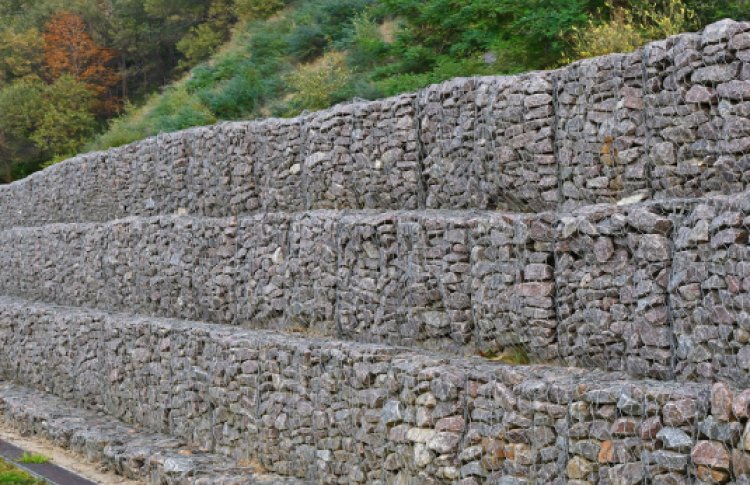Effective Slope Stabilization Methods: Protecting Land and Infrastructure
In this comprehensive guide, we delve into the principles, applications, and advancements in slope stabilization methods, providing insights for engineers, environmentalists, and stakeholders involved in land development and conservation projects.
Share this Post to earn Money ( Upto ₹100 per 1000 Views )

Slope Stabilization Methods and Classification
Geometrical Techniques
Slope stabilization methods relies heavily on geometric approaches, which include carefully considered changes to the slope's profile and structure. These techniques include building retaining walls, creating stepped platforms with terracing, and reinforcing areas with soil nails or rock bolts. Through geometric interventions, engineers can efficiently decrease structural instability, landslides, and erosion by redesigning and reinforcing slopes. The following are involved in using geometric approaches to stabilize slopes:
- Levelling the slope’s surface.
- Removing sections of soil or rock.
- Reducing top loads to minimize shear stresses on critical surfaces.
- Building pressure berms at the slope’s base for added stability.
- Substituting slipped material with free-draining substances to lessen pore water pressure.
- Compact slip debris to enhance resistance against external loads.
Hydrological Techniques
In order to stabilize slopes, hydrological strategies concentrate on controlling water flow and lowering soil saturation. These techniques include putting in place drainage systems to direct water off of slopes and employing riprap and check dams as erosion control measures. Hydrological techniques serve a vital role in improving slope stability and reducing geological risks by addressing water-induced erosion and saturation. The following are involved in using hydrological approaches to stabilize slopes:
- Implementing surface and subsurface drain pipes to decrease pore water pressure.
- Utilizing inverted filters to manage water infiltration and soil stability.
- Applying thermal methods like ground freezing and heating to alter soil properties and enhance stability.
- Incorporating vegetation and bioengineering to absorb excess water and reinforce slopes.
- Constructing check dams or ripraps to control water flow and prevent erosion.
- Installing erosion control blankets or geotextiles to stabilize soil and reduce water-induced instability.
- Employing retention ponds or swales to capture and manage surface water runoff effectively.
Chemical and Mechanical Techniques
Slope stabilization is accomplished in large part by the application of mechanical and chemical approaches. Stabilizing agents are applied using chemical methods to increase soil strength and cohesiveness, lowering the risk of landslides and erosion. In contrast, mechanical methods for reinforcing unstable slopes and stopping movement involve the use of anchors, rock bolts, or soil nails. Combining these methods yields solid results for improving slope stability and reducing geological risks. It is attainable through:
- Employing grouting techniques to enhance the slope’s shear resistance.
- Building restraining structures like concrete gravity or cantilever walls for stabilization.
- Utilizing gabion structures, baby crib walls, and embankment piles to resist toppling forces.
- Creating lime and cement columns to strengthen the soil and improve stability.
- Installing ground anchors, rock bolts, and root piles to add tension and reinforce rock blocks.
- Incorporating vegetation such as shrubs and grasses to minimize soil erosion and stabilize slopes.
Techniques of Construction for Slope Stabilization
Slope stabilization techniques encompass a spectrum of strategies classified into three primary groups:
- Reinforcement Support: This category includes a variety of methods, such as rock bolts, dowels, tied-back walls, shotcrete, and buttresses. These techniques are designed to provide structural support and enhance stability by reinforcing the slope’s integrity.
- Unstable Rock Removal: This group involves techniques aimed at removing unstable rock masses, including re-sloping and cutting. By eliminating precarious rock formations, this method reduces the risk of slope failures and potential hazards.
- Protection Measures: The protection category encompasses a range of preventive measures, such as constructing ditches, mesh barriers, catch fences, warning fences, rock sheds, and tunnels. These structures are strategically designed to divert water, control erosion, and mitigate the impact of natural forces on slopes, enhancing overall stability and safety.
















